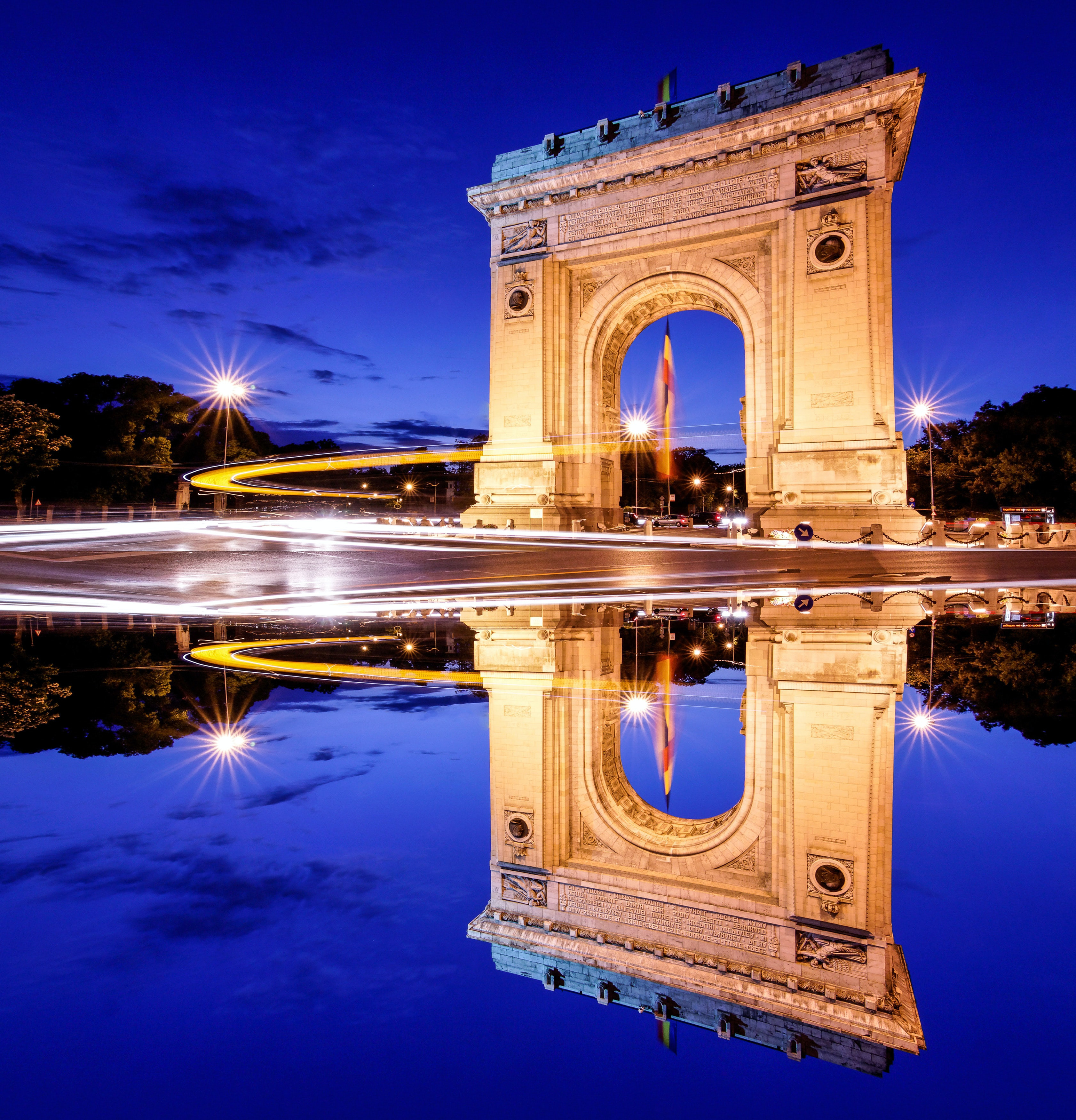Flights to Bucharest

Bucharest is Romania's capital, the largest city, and its historical, industrial, and financial hub. It is situated in the southeast of the nation, on the shores of the Dâmbovița River, nearly 60 kilometres (37.3 mph) northwest of the Danube River as well as the Bulgarian borders. Bucharest first appears in print in 1459. It became the capital of Romania in 1862 and is the focus of Romanian art and media. Its architecture incorporates aspects from the past (neoclassical and Art Nouveau), the interbellum (Bauhaus and Art Deco), the communist era, and the modern age. Bucharest was dubbed "Little Paris” during the interwar years because of its exquisite architecture and the delicacy of its elites (Micul Paris). Regardless of the fact that many premises and townships in the ancient city centre were severely destroyed by war, earthquakes, and, most notably, Nicolae Ceaușescu's program, many lived and have been preserved. The city has had a cultural and economic boom in recent years.
As per the 2011 census, the city has 1,883,425 residents, a drop from the 2002 census. Including the industrial estates around the urban region, the planned Bucharest metropolitan area would have a capacity of 2.27 million citizens. Bucharest has a functioning urban area of 2,412,530 people, according to Eurostat (as of 2015). Bucharest is the sixth-largest metropolitan area in the European Union, after England, Berlin, Barcelona, Rome, and Paris, in terms of the population inside city limits.
Bucharest is Romania's most prosperous city economically. There are several huge conference centres, higher education institutions, cultural venues, classic "shopping arcades," and leisure spaces in the city.
The city itself is officially known as the "Municipality of Bucharest" (Municipiul București), and it has the same administrative status as a national county, with six sectors each managed by a local mayor.
When to Visit Bucharest, Romania
Bucharest is a place of paradoxes. Bucharest is best visited in April, May, June, September, or October, according to travel experts. Simply said, the finest periods are spring and early fall. Summers may be oppressively hot, even if you enjoy the heat. Winter is not a good season since it may get quite cold and enormous chunks of ice can disrupt transportation. It also gets colder rather early, about 4 PM, and certain tourist sites are either closed or close early. Spring and fall are ideal times to visit Bucharest since the weather is not too hot or chilly and there is plenty of daylight. So you may roam around Bucharest for hours, exploring its distinct architectural charm and gorgeous parks.
5 Things to Do in Bucharest, Romania
Dimitrie Gusti National Village Museum
The entire west side of Herăstrău Park is dedicated to a vast outdoor museum with approximately 270 original historic structures. These structures, made of stone, wood, or cob (clay and straw), have been painstakingly deconstructed and reassembled at this location and come from all over the nation, from Banat in the west to Moldova in the east, and Transylvania in the centre. Each location has its unique style, from the brilliantly painted walls of the Danube Delta to the intricately carved gates of Berbeşti in Romania's centre. The museum was founded in 1936 by prominent sociologist Dimitrie Gusti, and its oldest residences originate from the 18th century. Each home also includes an English-language audio overview of its style and area.
Parliamentary Palace
The Parliamentary Palace not only houses Romania's Parliament, but it also brilliantly captures Nicolae Ceaușescu's megalomania. At 365,000 sq metres, it is the world's largest administrative structure, meant as a dwelling, and despite housing reception halls, museums, government offices, and the parliament chamber, it is nearly three-quarters empty. The palace was built at a high cost, both financially and in terms of lives, since thousands of people are said to have perished during its development in the late 1980s. The palace, which had eight underground floors and a nuclear bunker at the bottom, was the focal point of Ceaușescu's grandiose reconstruction of the Bucharest earthquake that occurred in 1977. You must travel inside to appreciate the entire, mind-boggling scale of this structure, seeing the Museum of the Palace, the National Museum of Modern Art, and the Museum of Communist Totalitarianism.
Romanian Athenaeum
The George Enescu Philharmonic Orchestra is based at the Neoclassical Romanian Athenaeum, a world-class performance hall. This majestic edifice, surrounded by gardens, was erected in 1888 and given a full renovation to rescue it from implosion in 1992. The circular performance hall seats more than 650 people and features an epic mural on its frieze depicting the most critical events in Romanian history. It is housed beneath a majestic dome adorned with golden stucco work. Book online and collect tickets at the box office for an economical night of Haydn, Bach, or Mozart. Visit in September for the George Enescu Festival, which has a packed schedule of concerts and is one of Eastern Europe's largest classical festivals.
Revolution Square
Revolution Square, the site of several Romanian institutions, was named after the 1989 uprising that toppled Nicolae Ceaușescu and abolished the Socialist Republic of Romania. The Ministry of Home Affairs is an intriguing structure to consider for a moment. This was erected as the Romanian Communist Party's Central Committee, and in 1989, Ceaușescu and his spouse Elena escaped by air from the roof before being convicted and killed on Christmas Day of that same year.
Palatul Primăverii (Spring Palace)
A captivating piece of twentieth-century Romanian history may be found in the posh Primăverii neighbourhood, not far from Herăstrău Park. The Palatul Primăverii was the opulent mansion of the legendary dictator Nicolae Ceaușescu, and excursions are possible by arranging a day in advance.
The winter garden, wine cellars, silk wallpaper, precious art, costly furnishings, a big pool house, bathrooms with solid gold fittings, and even a cinema were all included in this 80-room castle erected in the 1960s.
Richard Nixon, who had tea with Ceaușescu in the palace in 1969, was among the global leaders who were welcomed here.






